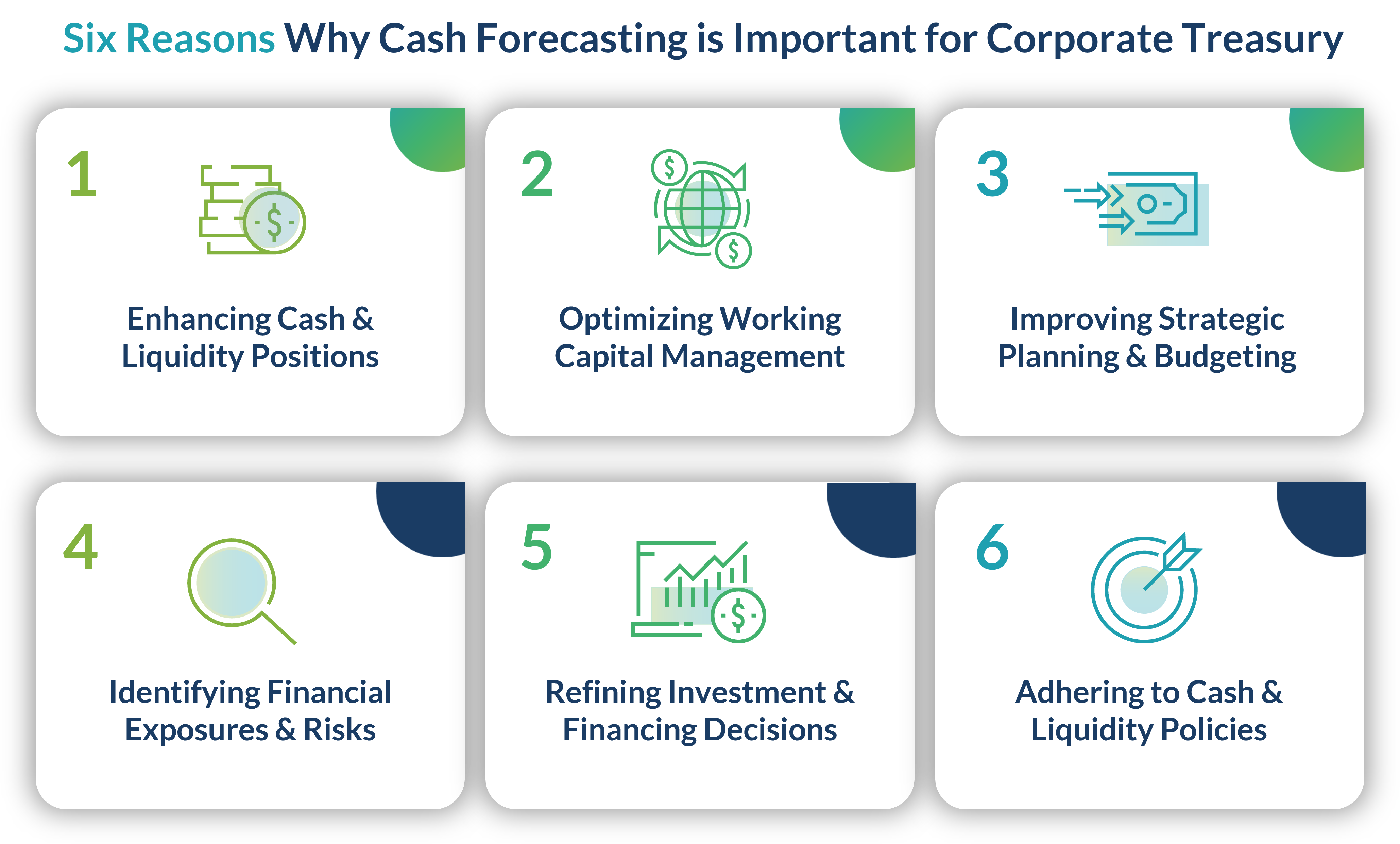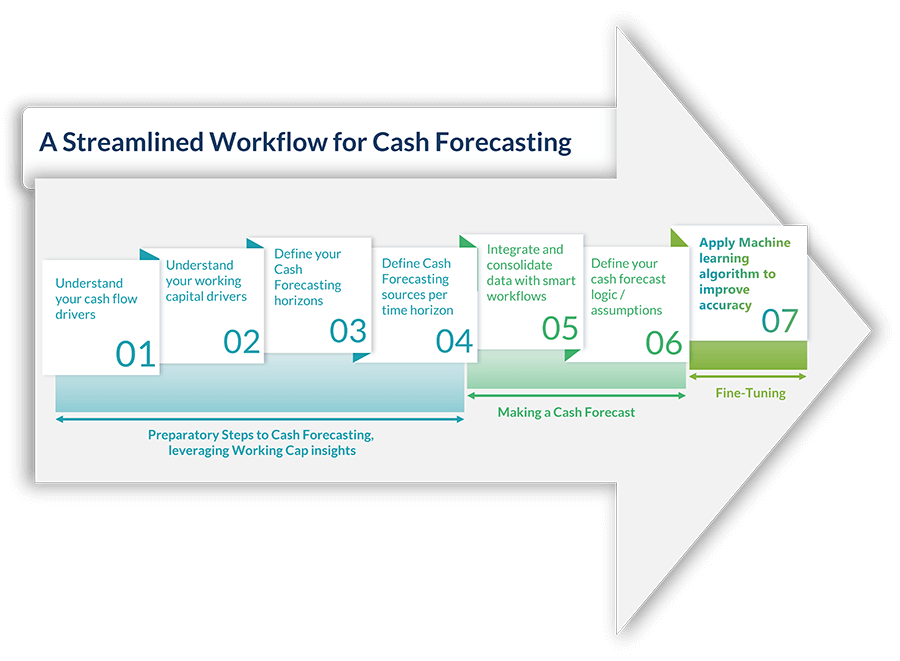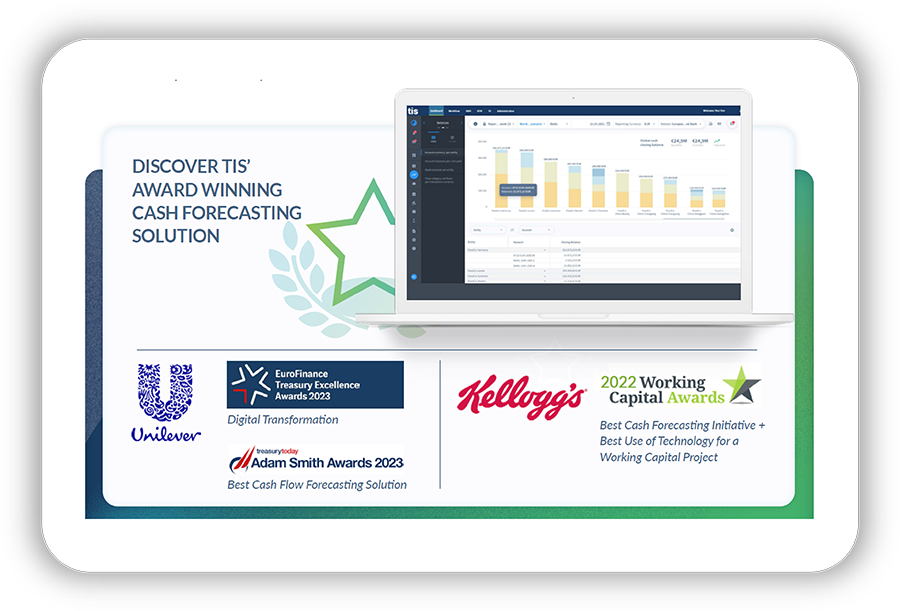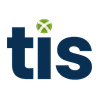This blog is based on a recent TIS whitepaper that explores modern-day best practices for treasury’s cash forecasting workflows in 2023 and beyond. To access the full whitepaper with extended insights and analysis, click here. For more information about the cash forecasting solutions provided by TIS, visit this page.
Why is Cash Forecasting so Important for Treasury?
For as long as corporate treasury has existed, cash and liquidity management have been two of the primary responsibilities entrusted to practitioners. Today, the cash management function often includes forecasting and working capital analysis tasks as well, and in recent years, the emphasis placed by organizations on improving these functions has skyrocketed in importance.
Why is this?
By accurately predicting their company’s future cash flows, treasury departments can make informed decisions regarding investments, borrowing, and overall liquidity management. Today, cash forecasting allows businesses to assess their ability to meet financial obligations, optimize cash balances, and plan for future capital expenditures. It also provides visibility into short-term and long-term cash requirements, enabling proactive measures to be taken to avoid cash deficits or excessive cash holdings.
Moreover, cash forecasting serves as a fundamental tool for risk management, allowing treasury professionals to identify potential liquidity gaps, currency exposures, and interest rate risks. With an accurate understanding of cash flow patterns, corporate treasurers can ensure that sufficient funds are available to support daily operations, manage working capital effectively, and seize growth opportunities.
In 2023, industry data has clearly highlighted the extent to which cash forecasting is being prioritized by corporate practitioners. In fact, a recent panel survey of over 250 practitioners recently highlighted that cash forecasting remains a critical priority not only for treasury, but for the CFO as well. In addition, this survey evaluated the investment plans of treasury groups over the next year and found that cash forecasting technology is top of the agenda for new spend over other areas such as payments and security. While there are many reasons for this, a pronounced spike in volatility that has been impacting the corporate environment since 2019-20 is one major factor.

–
Cash Forecasting is Critical During Periods of Heightened Volatility
Heading into 2019-2020, numerous corporate treasury studies from Strategic Treasurer and the Association for Financial Professionals (AFP) had already shown that the importance of cash forecasting was increasing in the minds of practitioners. Following the aftermath of the 2007-08 financial crises, many treasury teams had reprioritized the forecasting function as a means of better identifying liquidity risk and preparing for adverse events. However, the 2020 pandemic and the subsequent geopolitical and supply chain crises have clearly put these priorities into overdrive for many teams.
As it stands today, a myriad of disruptions continue to exasperate the global economy and are amplifying the need for accurate and timely cash projections, as well as improved risk management and liquidity optimization. With revenue streams fluctuating, demand patterns shifting, and supply chains experiencing severe disruptions, businesses have little choice but to develop a comprehensive understanding of their cash positions to mitigate risks, ensure financial stability, and make strategic adjustments.
Going by the data, 62% of enterprise-level treasury practitioners in 2019 indicated that cash forecasting was the function they spent most of their daily time on. This was higher than any other listed function including payments, security, and compliance management. These numbers increased even more during 2020, and in 2022, 61-68% of practitioners across small, mid-market, and enterprise companies indicated that developing skills for more effective cash forecasting were more important than any other skillset.
In large part, this added emphasis on cash forecasting in recent years is due to the following reasons:
1. More Unpredictable Cash Flows: Economic volatility often leads to fluctuations in customer demand, supplier performance, and market conditions. As a result, cash inflows and outflows can become more unpredictable. Cash flow forecasting allows treasury to gain visibility into potential cash flow disruptions (i.e. late vendor payments, reduced sales revenue, etc.) and adapt their liquidity management strategies accordingly.
2. Greater Need for Risk Mitigation: Heightened volatility brings increased risk, including potential credit defaults, market volatility, and liquidity challenges. By accurately forecasting cash flows, treasury teams can better identify and mitigate risks associated with cash flow shortfalls. This includes proactively planning for contingencies, arranging alternative funding sources, or renegotiating supplier payment terms to ensure the organization’s ongoing financial stability.
3. Data Requirements for Decision Making: During periods of volatility, making well-informed financial decisions becomes even more critical. Cash flow forecasting provides treasury (and the CFO) with valuable insights and data regarding the organization’s liquidity position, which enables them to better evaluate investment opportunities, assess the feasibility of expansion plans, and make strategic decisions about financing. Accurate forecasts also help minimize the risks associated with capital allocation decisions.
4. Stakeholder Communication Requirements: Sudden, unexpected, or prolonged volatility often triggers increased scrutiny from stakeholders such as investors, lenders, and regulatory bodies. An accurate and timely forecast process can quickly provide up-to-date information for these stakeholders, demonstrating the organization’s ability to manage cash flows effectively even in uncertain market conditions. This ultimately enhances transparency and builds confidence among various stakeholders, partners, vendors, and customers.
5. Focus on Cash Preservation & Optimization: When cash flows are uncertain, preserving cash becomes crucial to ensure the organization’s survival and resilience. Cash flow forecasting helps treasury identify potential cash conservation measures such as cost optimization, inventory management, or negotiating favorable payment terms with suppliers. It also allows practitioners to take proactive steps to manage cash outflows and maintain an adequate cash cushion.
Given the above factors, it’s easy to see why cash forecasting has become so important during the past few years. But as companies increasingly prioritize the cash forecasting function, there is less and less room for error – especially since numerous other stakeholders are relying on treasury for accurate data and information.
For this reason, it is critical that practitioners adopt an automated, streamlined, and comprehensive forecasting workflow that addresses financial performance across the entire company.
Let’s explore further.

A Standardized 7-Step Approach to Cash Forecasting
Having analyzed treasury’s cash forecasting functions across thousands of companies over the past few years, the below workflow represents seven of the most common (and important) steps that a cash forecast should consist of. In addition, the following infographic highlights key steps that TIS experts have identified as helping refine the forecast process even further through the use of enhanced technology.
1. Collect & Aggregate Data: Treasury must aggregate and classify relevant financial data from various sources, including historical cash flow records, sales forecasts, AP / AR data, budget information, and any other factors related to industry trends, regulatory changes, or seasonal fluctuations. Depending on the size and complexity of a company, this step might require treasury to gather data from numerous ERPs, TMSs, and back-office systems, as well as a myriad of banks, entities, and field offices globally. Given the critical importance of capturing the right data to build the forecast, this first step is crucial and great care must be taken to ensure all relevant data is accounted for.
2. Communicate With Key Stakeholders: Effective communication between treasury and AP, AR, accounting, and FP&A teams is crucial when creating cash forecasts. This is because these teams possess valuable insights and data that are essential for accurate forecasting. For instance, AP teams handle payment schedules, invoice processing, and supplier relationships, while Accounting maintains financial records and historical data and FP&A possesses knowledge of budgeting, financial planning, and performance analysis. Collaborating with these teams ultimately ensures that treasury receives comprehensive and accurate data inputs, which means this step should be completed in close conjunction with the data collection process in step one.
3. Develop Cash Flow Projections: Once treasury has worked cross-collaboratively with other teams to capture and classify all relevant data, the next step is to apply advanced financial models or cash flow forecasting software to analyze the collected data. Although Excel models are often used by smaller companies to complete this step, larger companies will almost surely need to deploy a software solution for additional capabilities. This step ultimately includes estimating sales revenue, factoring in collections and payment cycles, considering fixed and variable expenses, and incorporating other factors such as tax obligations, loan repayments, and capital expenditures. During this phase, it’s important for treasury to understand how the length of their forecasts (i.e. 1 day, 1 week, 1 month, etc.) are impacted differently by direct, indirect, and external cash flow drivers.
4. Perform Scenario Analysis: After a cash flow projection has been developed, treasury must then perform sensitivity analysis and scenario modeling to assess the potential impact of various factors on the anticipated cash flows. This helps identify risks and uncertainties and allows for contingency planning. In the modern era, this step often includes applying a machine learning or smart-logic algorithm against the cash flow model to evaluate gaps in reporting or any unforeseen oversights. Treasury may also run scenario analysis by different timeframes or against different market scenarios in order to understand unique impacts on their cash flows in each circumstance.
5. Undergo Variance Analysis: This step involves reviewing and validating the forecast by comparing it against historical data, actual performance, and other internal or external benchmarks. This step ensures the accuracy and reliability of the forecast and is also often enhanced by applying advanced smart-logic, AI, or ML algorithms to the data for better identification of workflow gaps or reporting pitfalls. For instance, an ML-enabled review of the forecast may find that a certain supplier has recently begun to make payments a few days later than normal, which is resulting in a slight cash deficit within a certain region that may increasing borrowing costs. But regardless of what variance workflow is prepared, the important point is that treasury actually conducts this evaluation after forecasts are generated to ensure there are no significant gaps in their reporting, assumptions, or data collection.
6. Generate Reports & Insights: Once a cash forecast has been generated and evaluated across multiple scenarios, treasury can then generate reports for themselves and the rest of their organization that provide a comprehensive view of anticipated cash flows. The focus of this step is on highlighting key trends, risks, and opportunities, with a noted importance on what is causing these trends to occur (i.e. sales seasonality, inventory bottlenecks, vendor payment delays, etc.). As these reports are generated and shared with other stakeholders and groups, discussion can be undertaken to determine the most effective solution for addressing anticipated cash deficits or surpluses, such as through increased borrowing, investments, etc.
7. Audit for Continual Improvement: The final step in treasury’s cash forecast process is to acquire feedback and accuracy assessments from their teams on the effectiveness of their forecasts to refine and adjust the process moving forward. This step should include the evaluation of changing business variables (i.e. organic growth, M&A activity, etc.) or evolving market conditions. It’s important to remember that the cash forecasting process is never perfect, and the variables impacting the process are constantly shifting. As a result, continual analysis and refinement over time is paramount for enhancing and maintaining long-term accuracy, reliability, and relevance.

To access additional tips on how to optimize treasury’s cash forecasting processes and effectively leverage technology (including MI and AL) to refine the process further, click here to download the full whitepaper. For more information about the cash forecasting solutions provided by TIS, visit this page. You can also read the Kellogg’s, Unilever, TomTom, and Pearson success stories for more practical insights related to specific use cases.



